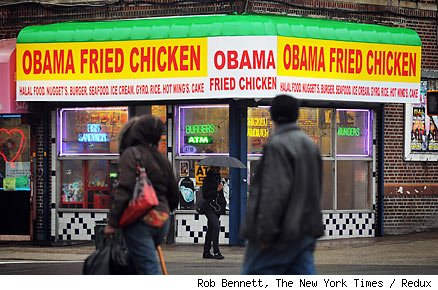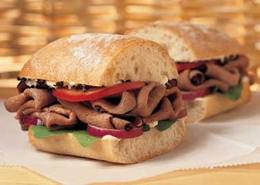Amy and I were talking about Savannah, Georgia, yesterday – the self-proclaimed home of southern charm and hospitality — and how we stopped and walked around town while traveling in 2009, did some  sightseeing, and left unimpressed.
sightseeing, and left unimpressed.
Curt Bridgett likes the place and decided to open an Italian ice cart.
The Savannah Morning News reports that in a town teeming with tourists, especially during the sweltering summer months, Bridgett thought Little Jimmy’s Italian Ices would be a hit. What he hadn’t counted on was that getting a business off the ground takes a lot more than a good idea and the willingness to work hard.
Dealing with zoning ordinances, health codes, licenses and permits and a host of other paperwork has become a job in itself. He’s realizing what many small and micro-business owners have learned — that entrepreneurship comes with a price.
Bridgett said, "I don’t understand why my business is illegal. Why can’t I just make a living?"
According to the Chatham County Mobile Food Service Unit Checklist, Bridgett must have:
— A hand-washing sink with hot water
— An electric cooler/freezer
— A bricks-and-mortar home base such as a restaurant or commercial kitchen in which food containers or supplies are kept, handled, prepared, packaged or stored for transport, sale or service elsewhere
Bridgett currently has a solar-heated gravity water tank, an insulated cooler and a storage facility for his product, but those don’t meet the standards.
"It’s just flavored ice," Bridgett said. "It has no dairy, nothing to spoil."
C. Todd Jones, Chatham County environmental health director said,
"Just because something isn’t cooked doesn’t mean that it isn’t prone to cross-contamination or harboring bacteria. The rules apply equally, whether we  are inspecting a large, well-known restaurant or a small mom-and-pop operation. Although it may seem like a blanket approach, it is our job to make sure that anyone selling food items — and ice is considered food — is taking the proper steps to avoid contamination."
are inspecting a large, well-known restaurant or a small mom-and-pop operation. Although it may seem like a blanket approach, it is our job to make sure that anyone selling food items — and ice is considered food — is taking the proper steps to avoid contamination."
And he argued there have been cases where something as innocuous as ice has caused harm including outbreaks involving hepatitis, E. coli, norovirus and salmonella
 consumers are free from foodborne illnesses.
consumers are free from foodborne illnesses.
.jpg) picture of the conditions at some of Canada’s meat and poultry plants where sanitation problems persisted.
picture of the conditions at some of Canada’s meat and poultry plants where sanitation problems persisted.
.jpg) line with other developed countries, by shifting from an inspection-based system to a risk-based approach.
line with other developed countries, by shifting from an inspection-based system to a risk-based approach..jpg) Although NSW has established
Although NSW has established .jpg) United Egg Producers. The trade group is developing safety standards for the industry that would go beyond federal regulations.
United Egg Producers. The trade group is developing safety standards for the industry that would go beyond federal regulations. Inspectors found cooked crawfish being stored at the wrong temperature, live crawfish in a sink next to dirty dishes, dirty floors – including dead crawfish on the floor of a walk-in freezer – and dried food debris caked to shelves and "clean" kitchen knives.
Inspectors found cooked crawfish being stored at the wrong temperature, live crawfish in a sink next to dirty dishes, dirty floors – including dead crawfish on the floor of a walk-in freezer – and dried food debris caked to shelves and "clean" kitchen knives..jpg) because it’s cheaper but because it’s safer.
because it’s cheaper but because it’s safer..jpg) undersecretary of agriculture for food safety at the USDA. "It has a ‘wander around and hope you bump into something’ " approach.
undersecretary of agriculture for food safety at the USDA. "It has a ‘wander around and hope you bump into something’ " approach..jpg) the Health Department after scoring 115 violation points, almost 100 points past the C grade.
the Health Department after scoring 115 violation points, almost 100 points past the C grade. 11) Food contact surface not properly washed, rinsed and sanitized after each use and following any activity when contamination may have occurred.
11) Food contact surface not properly washed, rinsed and sanitized after each use and following any activity when contamination may have occurred. sightseeing, and left unimpressed.
sightseeing, and left unimpressed. are inspecting a large, well-known restaurant or a small mom-and-pop operation. Although it may seem like a blanket approach, it is our job to make sure that anyone selling food items — and ice is considered food — is taking the proper steps to avoid contamination."
are inspecting a large, well-known restaurant or a small mom-and-pop operation. Although it may seem like a blanket approach, it is our job to make sure that anyone selling food items — and ice is considered food — is taking the proper steps to avoid contamination." agency said Wednesday.
agency said Wednesday.